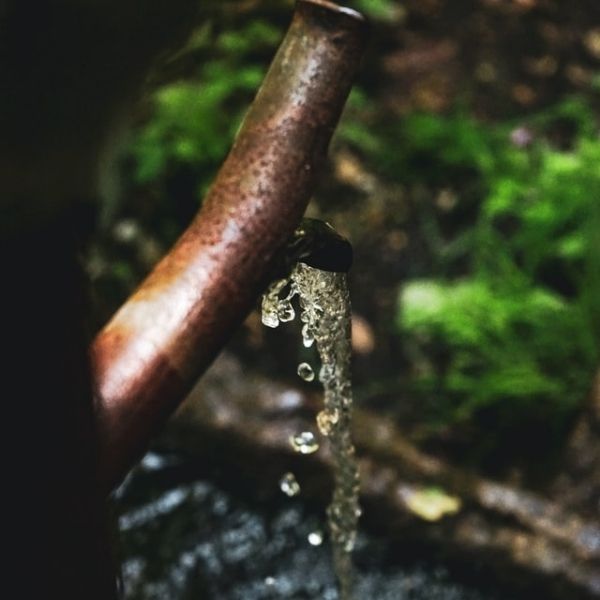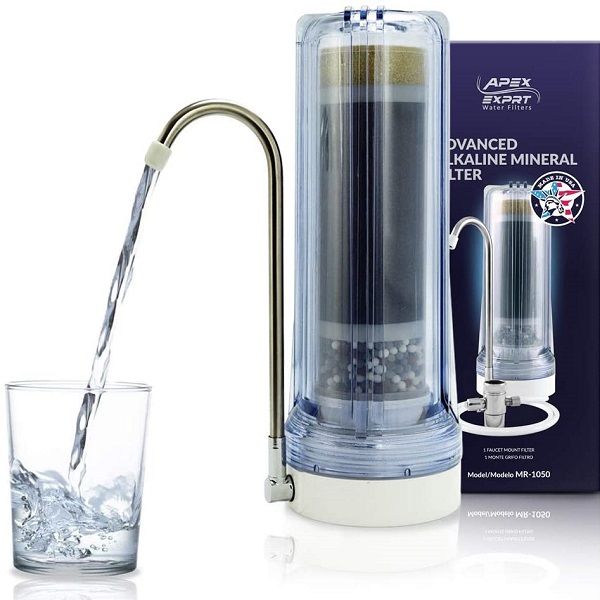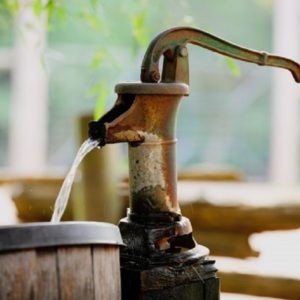Effective Ways of Removing Iron and Rust from Water
Drinking water containing iron and rust (iron oxide) can be hazardous for your health. Rusty water can damage your clothes, as well as the faucets. Thanks to modern-day solutions, removing rust is not as challenging as one might think.
With the right equipment and knowledge, you can easily remove rust from well water. You might wonder how to remove iron from water? Well, you can get rid of iron found in your water supplies by following methods:
Reverse Osmosis
Reverse Osmosis utilizes a semi-permeable membrane to remove impurities from water. It can remove various ions like iron, sodium, chlorine, and lead, etc. The pores in the membrane are so tiny that they do not allow various hazardous ions and particles to pass through it.
Iron Removal Systems
For a well having high concentrations (3.0 ppm) of iron, aggressive water treatment is needed. Iron removal systems come in handy in such cases. These systems oxidize the iron ions and convert them into ferric using various oxidizing media. These ferric ions are larger in size and get trapped in the whole house well water filter.
The trapped particles are then removed. Here are different types of iron removal systems:
- Aeration based
- Potassium permanganate based
- Manganese greensand
- Ozone based
- Polyphosphate sequestering based
- Hydrogen peroxide-based
Shock Chlorination
This method is beneficial for the removal of bacterial iron from the water. A strong chlorine solution with up to 200 ppm chlorine is added to the well water. Shock chlorination is perfect for bacterial iron that has been accumulating for years. The method is quick and affordable.
Distillation
It is among the earliest ways of water purification, and it is still used today. The process successfully eliminates inorganic substances from the contaminated water source, including metals (lead), nitrates, and other bothersome particles like iron and hardness.
To obtain clean water, the process of distillation uses evaporation. Steam is created by heating contaminated water in a water heater. Inorganic chemicals and big non-volatile biomolecules do not evaporate with liquid and are therefore left around. This steam is then converted into liquid form again.
Investigate The Source of Rust
This is not exactly a method of removing iron and rust. But sometimes, iron in water is because of a rusty plumbing system. In that case, it is better to treat the actual cause. Clean the bottom of your retention tank periodically as well.
Moreover, old wells that are almost collapsing can be of no good. It might be a great idea to dig up a new well. Put up a new well pump, build a new water system for yourself, and enjoy limitless iron-free tap water.
Iron and Rust In Water
Iron is present in the water supply in the form of ferrous and ferric ions. It leaves pigmentations on clothing and utensils. It also makes toilet tanks rusty. Also, if ever used on carpets, it leaves orange stains. When dissolved iron is present in food, beverages, or water, it hints metallic taste. The metallic taste ruins and destroys the tasting experience.
The insoluble iron present in the water can also affect the water flow and quality of faucets, pipings, washing machines, electrical fittings, sprinklers, and fixtures. To resolve the issue and to eradicate the soluble iron, we need iron extraction systems. A water softener works too in dire need to remove rust.

How Do Iron and Rust Get into Well Water?
Iron is found in copious amounts in Earth’s crust. When it rains cats and dogs, water containing rust penetrates through the soil into underground water systems or wells. Rain is not the only reason. Rusty plumbing near your wells or into them can also cause it.
Water systems having long-left rusty iron pipes in them can cause flecks of brown color. And it becomes the reason for corrosion and orange pigmentation at pipings.
You can find three types of iron in your well water. Each kind has a different treatment process for its removal.
Ferric Iron
Ferric is an insoluble form of iron. Bright yellow-red-hued water is the biggest symptom of ferric iron. If water is leaving red stains on your clothes, that means there is ferric iron present in it. You can easily remove this type of contamination with water filters.
Ferrous Iron (Clear Water Iron)
Water containing ferrous iron will appear to be very clear in a glass. Ferrous iron is soluble in water and is difficult to remove without an oxidation water filtration system. When subjected to room temperature and oxidized, the ferrous iron will turn into ferric. And it will impact the smell and taste of drinking water.
Bacterial Iron
Bacterial iron is the most hazardous form of rust found in your well water. It happens when bacteria form a chemical bond with iron. Bacterial iron appears as a deep red muck that resembles tomato soup. It gets stuck on your plumbing fixtures and fosters the growth of harmful bacterial infections.
Symptoms and Dangers of Iron and Rust in Water
All the iron in water is not hazardous for health. Drinking rusty water in small amounts will not affect your internal organs. That is why iron is considered a secondary contaminant. That means it mainly affects aesthetics and taste; it does not particularly make water harmful. It becomes dangerous when the iron level exceeds 0.3 ppm.
Rust particles in waster affect your health to a great deal. It can lead to kidney stones as well. It can cause several diseases like :
- Diabetes
- Hemochromatosis
- Stomach problems
- Nausea
- Cardiovascular Problems
Consuming high iron concentrations can lead to death, on a serious note. Solid iron residue, primarily found in well water, can cause lethargy and obesity. Hemochromatosis is a widespread disease that forbids your intestine from absorbing the iron from food. It can lead to confusion and cirrhosis of the liver.
Does Water Filter Remove Rust from Well Water?
Filtration is the right strategy when it comes to removing ferric from water. A sediment filter can easily capture insoluble ferric particles in its tiny holes while allowing clear water to pass through. But to remove ferrous iron, these filters alone are not enough. You’ll need further water treatment to obtain iron-free water.
Using backwashing filters is a preferable filtering technique. These are also more effective in removing ferric than ferrous. A Backwashing filter has in-service and backwashing phases. These filters do not need salt. They merely need water to rinse the collected particles. You can use two filters for better results as it increases the contact time.
Which Water Filters Remove Rust from Well Water?
Sometimes, it can be hard to tell if the drinking water has iron in it. Water testing is perfect for providing you with the most exact results about the water state. Several water filters help us remove iron from well water. We have stated the best iron filters below:
Water Pitcher and Dispenser
Water pitchers are commonly used by students and people with small living spaces. The pitcher’s shape, size, and mobility make it easy to transport and handle.
While most pitchers can eliminate chlorine flavor and aroma, only a few can remove additional impurities like mercury, gold, fluorine, and toxic metals. If you plan to buy a water pitcher, we suggest the Aquagear. It effectively eliminates a wide variety of pollutants.
Under Sink Water Filter
Under sink water filters are much more thorough and efficient in pollutants removal from well water. It has several filtering techniques, but on average, reverse osmosis water filtration is our top pick for the under-sink filters. They not only eliminate iron but other contaminants from water as well. The semipermeable membrane removes 99% of the harmful chemicals.
Countertop Water Filter
This sort of water filter is regarded as an entry-level device for domestic use. APEC’s portable reverse osmosis machine is one of our favorites.
It eliminates 99 percent of pollutants, resulting in pure, purified water. You may practically detach the faucet adapter and transport it to your new home with ease.

Iron Water Filter
Iron filters prove to be an affordable yet effective method of removing iron from well water. These filters remove all ferrous and ferric iron from water by treating both. They work on the ion exchange principle. First, they attract ferrous ions towards themselves; then, they convert these ions to their insoluble form.
The precipitated ferric gets stuck on filters while ion-free water comes out of the other side. They do need constant upkeep; you can not just install the system and forget it. You will need to clean the filters periodically; otherwise, their efficacy would be affected.
Frequently Asked Questions
Does Brita remove rust and iron from water?
Filters like Brita and Zero water do not claim to remove ferrous ions from water. These ions are smaller than the filters present in Brita and thus pass alongside the water. You can only use Brita to eliminate iron if you pre-process the water first with shock chlorination or some other oxidation method. However, it can filter out rust particles without any preprocessing.
Does boiling remove rust and iron from the water supply?
No boiling alone is not enough. It can not remove iron and rust from the water supply. If we boil water, the ferrous ions remain dissolved in the boiling water. So, boiling is pretty much useless when it comes to iron.
How do I know if my house is contaminated with iron and rust?
Iron contamination can be in two forms, i.e., ferrous and ferric. Ferric ions are easy to detect; they grant a metallic taste to the water. If you use chlorine bleach for washing clothes, it can discolor them. Look for orange streaks on your toilet bowl; this is also another sign of the presence of iron in your water line.
On the other hand, ferrous (clear water iron) is challenging to detect. You can conduct a water test from a nearby laboratory to detect the presence of iron in the water.
-For less than 0.3 ppm iron, you do not need to do anything as this amount is safe.
-If your water has more than 0.3 ppm iron, you will need aggressive techniques.
Conclusion
Red, orange, or brown color pigmentation in your tap water may be a sign of iron contamination. If one tap shows rusting signs and the other does not, you should contact your plumber. But if all the taps are showing signs of rusting, it means the central supply is contaminated. In that case, follow the guidelines mentioned above on how to remove iron and rust from well water.
